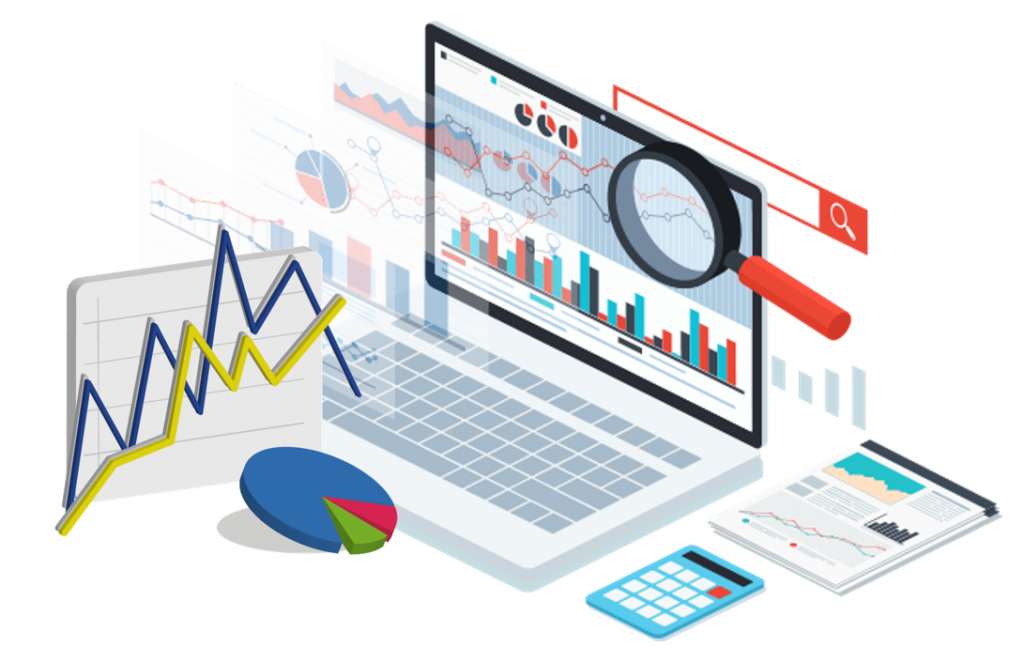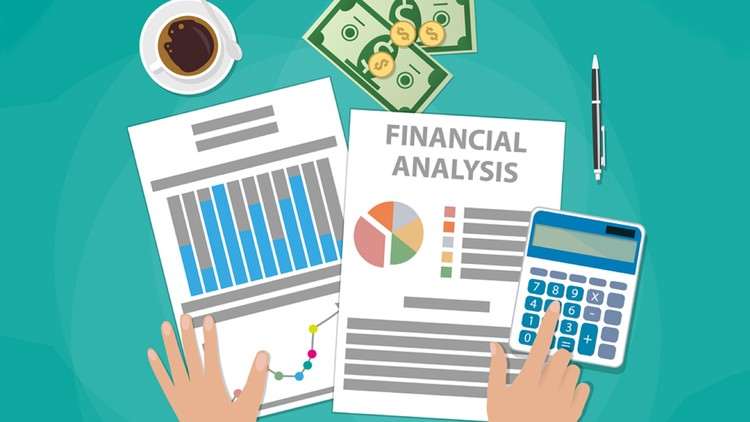In a world where every penny counts, knowing how to sift through the ocean of financial market analysis tools comparison isn’t just smart; it’s a must. I’ve been there, staring down screens packed with charts and numbers, feeling overwhelmed. But fear not! I’m breaking down the top contenders, peeling back their layers to discover which tools not only promise but actually deliver the insight you need. From analyzing stock features to gauging the effectiveness of your investments, my deep dive will give you the edge. And when it’s time to talk shop about trading platforms, I’ll show you which ones truly measure up. Portfolio management and real-time data can make or break your strategy—we’ll look at the systems that sync perfectly. Lastly, I’ll arm you with the know-how to marry technical and fundamental analysis for a tactical advantage in the markets. Buckle up; this is where the hype meets the hard-hitting facts.
Unveiling the Powerhouse of Market Analysis: Top Tools Reviewed
Stock Analysis Software Features
Stock analysis tools are a must-have for smart investing. They sift through mountains of data. They spot trends. Help you buy stocks low and sell high. With features like screening, you can find gems hidden in the market. Charting tools make complex info easy to grasp. This helps in making quick calls on buying or selling. Right tools mean better choices and more money in your pocket.
Now, compare trading platforms. Do they give you charting, screening, and more? Top platforms offer a mix. Some are great for newbies with easy tips and tricks. Others suit pros with complex features and data. But remember, more features can also mean more cost. Look for what meets your investing style without draining your wallet.
Investment Tools Effectiveness
Investment tools must do one thing well. They should make your investment grow. So how do we measure their kick? Simple, by their returns – the money they make you. And by how well they match your goals. If you like playing it safe, you’ll want solid risk management tools. If you thrive on the market’s highs and lows, you might want something spicier with options and derivatives.
Backtesting tools accuracy can set good tools apart from the best. Can they tell you how a strategy would’ve done in the past? This is a peek into the future of a strategy without risking a dime. Real-time data services are another game-changer. They deliver instant market info, so you catch the best trade winds.
Technical indicators comparison helps, too. They are like the lights on your car’s dash. They warn you and guide you through the market’s twists and turns. Fundamental analysis comes in handy when picking stocks for the long haul. It’s the difference between owning a flash-in-the-pan and a powerhouse.
But don’t just take my word for it. Put these tools to the test with your strategies and style. Notice how they handle, the speed they offer in trade execution. Use a stock screener on a trial basis. Check out a few investment strategy builders. Peek into the future with predictive analytics in finance tools. The true test is hands-on. Your money deserves the tools that pass this test with flying colors.
Cutting-Edge Trading Platforms: A Comparative Guide
Charting Software Review
Let’s dive into a hot topic: charting software. Market winners know their tools. Great charting software is like a treasure map. It shows where the gold is—or in this case, profit. Choose poorly, and you’re steering in the dark. Charting software must have a few key features. They must show real-time prices fast. They should have lots of charts and indicators. This means you can spot money-making trends.
Some software has cool add-ons. They let you draw on charts or test theories. They’re like your best friend in the trading game. I’ve tested many and some are stars. They shine with clean displays and quick data. But beware of the dull ones. They lag in speed and clutter your screen.
Before picking one, think about ease of use. You want to find your way around fast, not get lost in features. A simple setup saves time and stress. Ask yourself, “Can I see what I need with a quick glance?” If not, move on.
Backtesting Tools Accuracy
Now let’s tackle backtesting tools accuracy. What’s backtesting? It’s trying out your trading ideas on past data. Imagine you could check if a secret path led to treasure before taking a step. That’s backtesting. It’s crucial. It can save you from making losing trades.
Not all backtesting tools are equal. Some are like time machines. They’re so good at simulating the past market moves. They help you predict if your plan could win or tank. Others might leave you guessing, missing key price twists.
When we compare these tools, we focus on detail. They must handle lots of data. And not just any data—accurate, second-by-second market numbers. Plus, they should let you tweak your tests. This way, you can find the best strategy.
It’s about finding a tool that lets you say, “I trust this.” You need to know it’s giving you the real story. Just like a true pal doesn’t tell tall tales. A good backtesting tool helps you see if your ideas could really pan out. It’s like that friend who double-checks your puzzle before the big win.
You need both: sharp charting and reliable backtesting. They’re like a compass and a map on your trade journey. And in this ocean of options, finding the best takes work. Look for chart clarity and backtest precision. Pair them up, and you’re set to sail to profit islands.
Portfolio Management Perfected: Systems and Real-time Data in Sync
Portfolio Management Systems
Let’s dive into portfolio management systems. These tools help you keep track of all your investments. They show how each asset performs. This helps you make smart, timely decisions. They often include stock analysis software features. This lets you study how stocks have done in the past and guess how they’ll do in the future. And guess what? They are quite good at this.
Ask yourself: How handy is it to see all your stocks in one place? It’s gold when trying to spot trends. Plus, these systems may offer investment strategy builders. They guide your trade plans based on goals and risk levels. Handy, right?
Comparing platforms gets trickier, though. Each has fancy equity research applications. They all brag about having the best tools. I’ve examined these claims. Some really do stand out with quick trade execution and deep market insights. Look out for those.
Accuracy is a big deal in backtesting tools. They let you “time travel” with your strategy to see if it would have worked in the past. Neat, eh? But trust me, not all backtesting is equal. So, double-check their track records. It pays off.
Real-time data services are game changers. They give you updates on prices as they change, which can be every second. Want to be the first to catch a price swing? This is how. It’s about speed and staying current. These services often tie in with technical indicators and charting software to flag potential buys or sells. That’s why real-time data can be your best friend in a fast-paced market.
Real-Time Data Services
Now, about real-time data services. They are the eyes and ears of the market. Think of these as your personal market whisperer, giving updates before anyone else. This can mean big wins if you act fast.
Imagine trading forex, CFDs, or cryptocurrencies. These markets never sleep. Here, real-time data is not just nice to have; it’s a must. Every second counts and can mean the difference between profit and loss. Luckily, there’s a bunch of great real-time services out there. Dive in and compare them.
Remember, real-time doesn’t just mean numbers flashing on the screen. It’s about having useful info. Like what, you ask? Market sentiment can show if traders are feeling happy or nervous. Then there’s news that can shake up prices. Good services pack all this in one.
To sum it up, picking the right portfolio management system and real-time data service is a big deal. They keep your trading sharp and informed. Look for great stock analysis, smart strategy advice, and lightning-fast data. Your trading will thank you.
The Tactical Edge: Integrating Technical and Fundamental Analysis
Technical Indicators Comparison
When you trade stocks, picking the right tools matters. Picture this: you’re cooking. But instead of pots and pans, you’ve got technical indicators. There are loads of these – moving averages, RSI, MACD. They’re like your spatulas and spoons, helping you stir the pot and taste the sauce. Just as you’d compare kitchen gadgets, compare technical indicators too.
Some indicators track an asset’s momentum. Others spot trends or warn you when a stock’s too hot or too cold. What works for one trader may not be right for another. So, looking at how these indicators line up with your goals is key. If you like fast action, you might want oscillators that flash quick signals. But if you want to cruise and bruise it out long term, you might lean on trend-following tools like moving averages.
Fundamental Analysis Software
Now, let’s dish on fundamental analysis software. Using this type of software is like having a master recipe book. It dives deep into a company’s finances—sales, profits, debts. This software helps you spot the blue-ribbon winners in a sea of burnt dishes. In short, it helps you decide which stocks are worth their salt.
Such software scans through piles of data. It peaks into earnings, checks out the balance sheets, and even casts an eye over the company leadership. It bundles up all that info and gives you the lowdown in a snap.
But remember, no tool does all the work. You’re the chef in the financial kitchen. Whether you get to feast on the fruits of your labor depends on how well you use these tools. Mixing the quick insights from technical analysis with the deep dive from fundamental software might just be the perfect recipe. So, take the time to compare trading platforms with care. Make sure they serve up just what you need.
In the stock market kitchen, the best dish out there is a well-made decision. And having the right mix of tools is how you prep it. Some folks say don’t fix what’s not broken. But in trading, always look for sharper tools. Because when the market heats up, you’ll want the best spatula to flip those profits.
In this post, we’ve dived into some top tools for market analysis, checking out features of stock software, and looking at how effective investment tools can be. We also compared cool trading platforms, looking at how we can use charts and backtesting to make smart moves.
We walked through portfolio management systems and how real-time data keeps them up to date. Lastly, we checked out technical indicators and fundamental analysis software to give you the full picture.
I’ve shown you how the right tools can make a big difference in trading. With the best software, you can stay ahead in the game. Whether you’re new to this or a trading pro, these tools can help you make better choices. Use them wisely and watch your portfolio grow. Stay sharp and happy trading!
Q&A :
What are the key features to look for in financial market analysis tools?
When selecting financial market analysis tools, key features to consider include real-time data updates, technical analysis indicators, historical data access, customizability, integration with various data sources, user-friendly interfaces, and mobile access for analysis on the go. Additionally, check for tools that support portfolio management, risk analysis features, news and economic data feeds, as well as automation capabilities. Ensuring these features match your analysis needs will enhance your market decision-making.
How do different financial market analysis tools cater to various types of investors?
Different financial market analysis tools cater to various types of investors by offering specialized functions. For instance, day traders often require tools with real-time data and high-speed trade execution capabilities, while long-term investors might prioritize comprehensive fundamental analysis features and portfolio tracking. Tools also vary in their offer of technical indicators, charting options, and educational resources to suit both novice and experienced investors. Identifying which type of investor you are can help streamline the choice of tools that will best support your investment strategy.
Can you compare the cost-effectiveness of different financial market analysis tools?
Comparing the cost-effectiveness of financial market analysis tools involves assessing their features against the subscription or purchase price. Free tools may serve basic analysis needs but often come with limitations in data depth and technical capabilities. Premium tools, while more costly, provide a wide range of advanced features like proprietary algorithms, expert support, and comprehensive data analysis, which can justify the higher price point for serious traders. To determine cost-effectiveness, align the tool’s features and benefits with your specific investment approach and consider the potential return on investment it might offer through improved trade decisions.
What are the best financial market analysis tools for technical vs. fundamental analysis?
For technical analysis, some of the best financial market analysis tools include TradingView, MetaTrader, and Thinkorswim, which offer advanced charting capabilities, a variety of technical indicators, and back-testing functions. For fundamental analysis, tools like Morningstar, Stock Rover, and Simply Wall St provide extensive databases of financial statements, ratios, and proprietary scoring systems to evaluate company performance. Each type of tool is tailored to the respective analysis method, and many traders utilize a combination of both to formulate a well-rounded trading strategy.
Is it possible to get a free trial with financial market analysis tools before committing to a purchase?
Many financial market analysis tools offer free trials or demo versions that allow users to test out their platforms before committing to a purchase. These trials can range from a week to a month and typically provide access to most, if not all, of the tool’s features. Taking advantage of a free trial is a smart way to ensure that the tool is compatible with your analysis needs and is user-friendly. However, it’s important to read the terms of the trial to understand any limitations or requirements before starting it.






